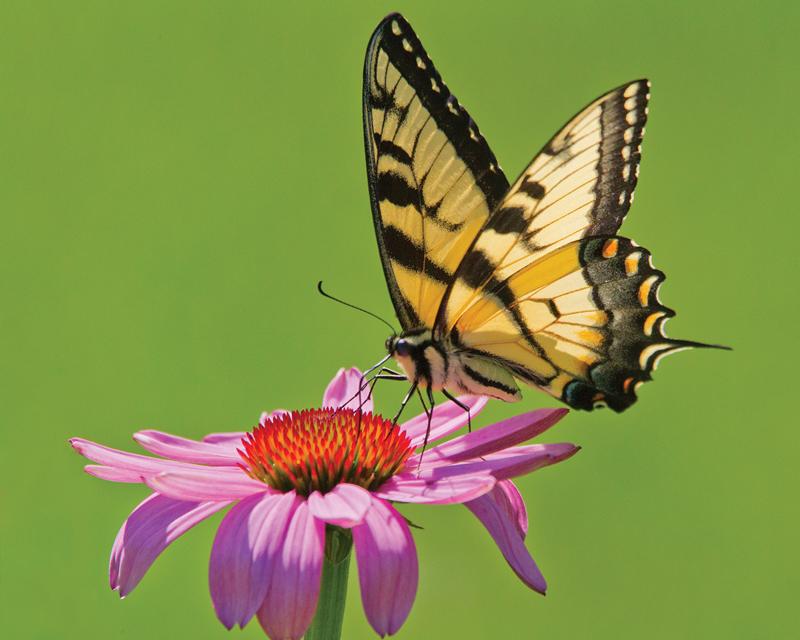In 1585, an Englishman named John White joined Sir Walter Raleigh’s voyage to establish a colony on Roanoke Island, Virginia. White was an artist, and before returning to England he painted, or at least started, what the Smithsonian Institution has called “a magnificent watercolor study of a tiger swallowtail butterfly.” As best we can tell, it is the first known drawing of a North American butterfly.
“You see a shadow before you see the actual butterfly,” says Ronda Spink, coordinator for the Michigan Butterfly Network. “And then you look up and see the butterfly flying. Happens a lot with tiger swallowtails.”
Who would have thought about finding a butterfly by noticing its shadow? But the Eastern tiger swallowtail is a big butterfly, standing out for its size, bright yellow color, and dark tiger striping (the female adds some blue to the rear part of its hind wings). And they sometimes glide slowly enough so that the observer can follow their flight without difficulty.
The female will deposit her eggs on many different plants–in Michigan, wild black cherry, tulip tree, and wafer ash are major hosts. Come fall, the caterpillar encapsulates itself in a chrysalis, hibernates, and emerges as a butterfly in spring or summer. Its flight period runs from May to the beginning of October, with one brood at the beginning of the flight period and the other toward the end. We usually see tigers all summer long.
Tigers aren’t fussy about nectar sources. They can be found on many butterfly-friendly flowers such as coneflower, zinnia, butterfly weed, butterfly bush, joe-pye weed, and verbena. Butterflies are most active during the hot part of the day, so the best time to look for flying tigers is starting in late morning on a sunny day.
City Natural Area Preservation stewardship specialist Becky Gajewski suggests looking for tigers at Marshall, Barton, and Furstenberg nature areas, Gallup and Bandemer parks, Matthaei Botanical Gardens (although the display gardens are closed as of press time), and Nichols Arboretum.
Kathy Squiers, a horticulturist with Washtenaw County, confirms our own observation that County Farm Park is another good place to look for tigers. On the Metroparks circuit, natural resources technician Ron Gamble lists Hudson Mills, Dexter-Huron, Delhi, and Lower Huron, Willow, and Oakwoods Metroparks as locations to look as you walk the trails or along forest edges.
The tiger is a common beauty–we see them in our own backyard every year. This butterfly is a generalist, happy in a variety of habitats ranging from woodlands to fields to gardens to forest edges.
Like so much of the natural world, when it comes to romance, it’s the boys who chase the girls. When they meet up, males release pheromones to encourage females to mate. Eventually there are more tigers, providing more beauty for painters to paint, photographers to photograph, and seekers to see.
